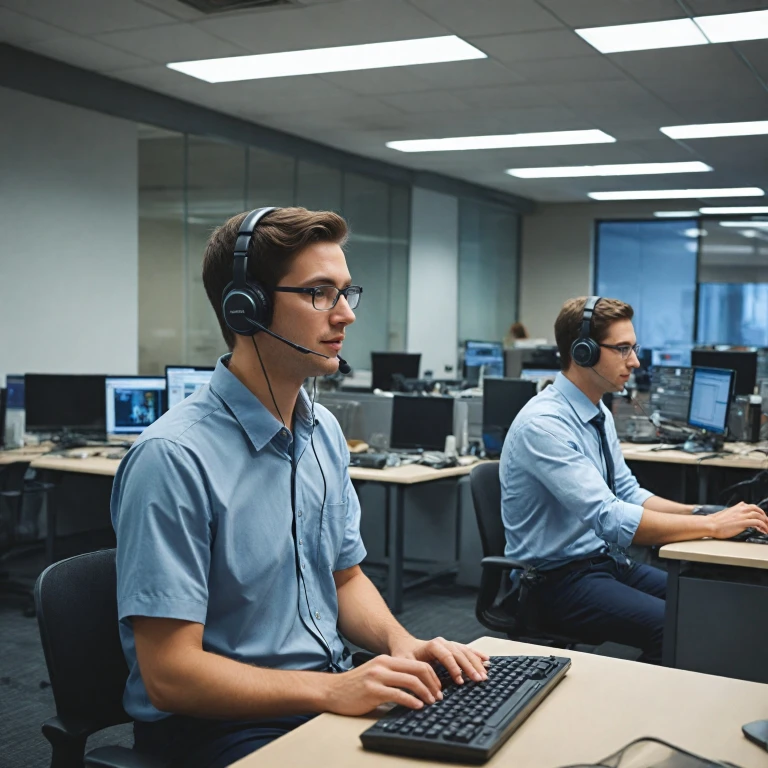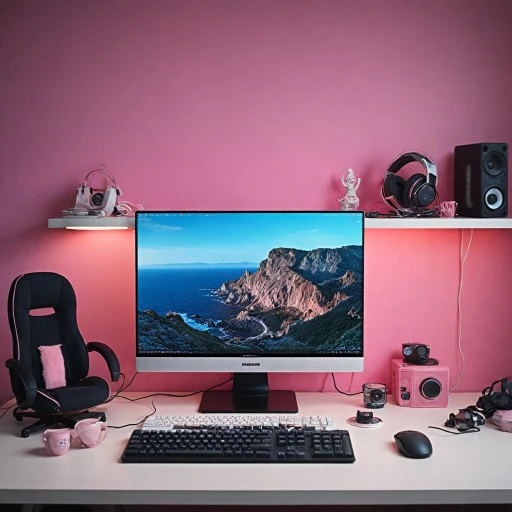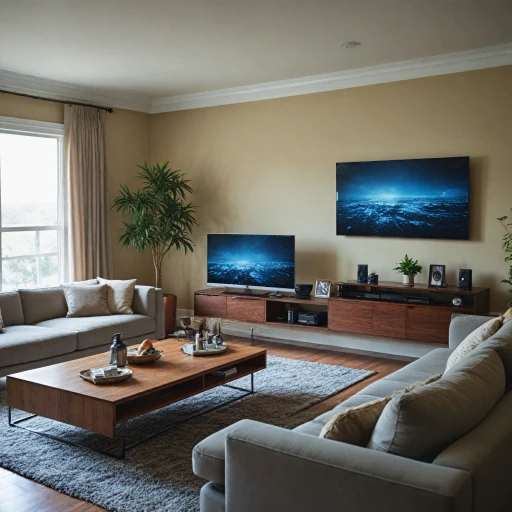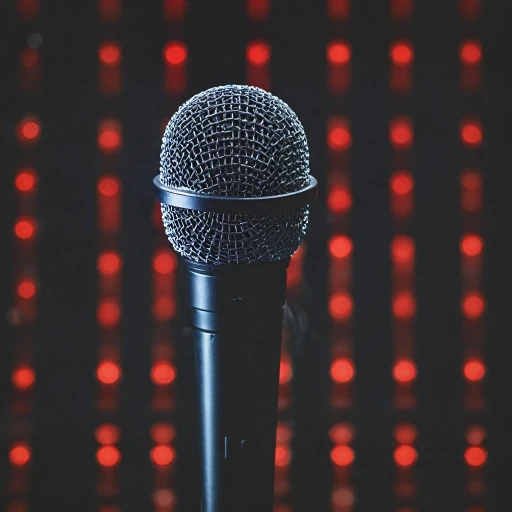Understanding Noise Cancelation Technology
Delving into Noise Cancellation Technology
In today's bustling office environments, especially in call centers, mitigating background noise is crucial for effective communication. Understanding noise cancellation technology is the first step in finding the ideal headset. Both active and passive techniques play significant roles in enhancing sound quality and ensuring comfortable use. Active noise canceling technology uses microphones and speakers to reduce ambient sounds. The headphones generate sound waves that are the inverse of unwanted noises, thereby neutralizing them. On the other hand, passive noise cancellation relies on the headset's physical design and materials to block unwanted sounds. It generally involves ear cups that create a seal around the ears, effectively muting external noise.Active vs. Passive Noise Cancellation
When choosing the best headset for your call center needs, it is essential to understand the differences between these two types of noise cancellation. Active noise canceling headsets, like the Jabra Evolve series, are favored for environments with constant background noise, such as open office spaces. They elegantly offer a quieter listening experience and often come in wireless headset options, enhancing mobility. Wired and wireless headsets, particularly Bluetooth headset options, frequently feature active noise canceling technology to amplify their effectiveness in noisy settings. Comparatively, passive noise cancellation is usually less costly but can be just as effective in quieter environments. Choosing between wired or wireless often comes down to personal preference and the specific needs of a call center environment. For individuals seeking ways to improve sound quality for special settings, such as those with hearing impairments, check out our insights on enhancing the auditory experience here. With advancements in sound technology, headsets like the Poly Voyager and Evolve Flex have emerged as popular choices, offering reliable battery life, impressive microphone quality, and excellent noise cancellation. Whether looking for a USB headset solution or a wireless counterpart, ensuring the technology meets the demands of a call center is key to maintaining a productive and comfortable work environment.Key Features to Look for in Call Center Headsets
Essential Features for Optimal Efficiency
When selecting a headset for call center environments, there are several key features you must consider to ensure top-notch performance and comfort. This selection is crucial as it can significantly increase productivity and overall satisfaction in the workplace.
Sound Quality and Noise Cancellation
The paramount feature to look for in a call center headset is sound quality. A good headset should provide crystal clear audio without any distortion. Noise cancelling capabilities, whether active or passive, play a vital role in minimizing background noise, thus facilitating clearer conversations. Both options have their merits, depending on your specific needs. For enhancing sound quality, noise cancellation can be a game-changer, especially in noisy office settings.
Comfort and Fit
Comfort is another important aspect, as wearing a headset for long hours is commonplace in call centers. Look for features like cushioned ear pads and adjustable headbands to ensure a snug fit that won't cause discomfort over extended periods. Wireless headphones can also add to the ease of movement within the office environment.
Wired vs. Wireless Options
Consider whether a wired headset or a wireless bluetooth headset will best suit your needs. Wireless options like the Jabra Evolve or Poly Voyager offer more flexibility and freedom of movement, whereas wired headsets can provide a more stable connection without the worry of battery life concerns.
Microphone and Connectivity
A good headset mic is crucial for ensuring your voice is heard clearly during calls. Look for headsets with high-quality built-in microphones. Connectivity is equally important, whether it’s a USB headset for easy plug-and-play use or one with comprehensive bluetooth compatibility.
Battery Life and Durability
If opting for a wireless headset, battery life is a non-negotiable feature. Center headsets with long-lasting batteries ensure uninterrupted calls throughout your workday, and durability helps protect your investment in the long term.
By evaluating these features, you're on the right path to finding the best headset to suit your call center needs, whether it’s the latest from Jabra, Poly, or other trusted brands.
Top Noise Canceling Headsets for Call Centers
Top Contenders for Noise Canceling Headsets in Call Centers
When it comes to creating a conducive work environment in bustling call centers, selecting the right noise canceling headset is paramount. Let's evaluate some of the foremost options that excel in their field. Jabra Evolve Series Jabra's Evolve lineup, including the Jabra Evolve Flex, has made a name for itself in the realm of professional settings. Renowned for exceptional noise cancellation, these headsets feature impressive microphone technology, ensuring clear, high-quality call experiences. With both wired headset and wireless headset options, they create a comfortable interface for long office hours. The addition of a Bluetooth headset feature adds flexibility, freeing you from cords during your call center shifts. Poly Voyager Series Poly Voyager is another strong contender that garners attention in call centers. Known for their Active Noise Cancellation (ANC) technology, these headsets effectively drown out background noise, fostering a more peaceful workday. Their wireless headphones design enhances mobility around the call center without compromising sound quality. These headsets also include usb headset options, catering to varied user needs. Budget-Friendly Versatility Affordable price does not equate to skimping on essential features. Some center headsets offer noise canceling capabilities without breaking the bank. Although they may lack some advanced features seen in their premium counter parts, they still deliver reliable sound output and satisfactory comfort levels. In this competitive landscape, it's crucial to consider features beyond price, such as battery life for wireless models and how comfortable they remain during extended use. Think about how these elements align with your specific call center needs before deciding to add cart. For a deeper dive into how ear covers can enhance both comfort and sound quality of noise canceling headphones, including center headsets, take a closer look here.Comparing Active vs. Passive Noise Cancelation
Examining the Distinctions Between Active and Passive Technology
Noise canceling technology has evolved significantly, especially in the world of call center headsets. A primary point of divergence in the modern headset is between active noise cancelation and passive noise cancelation.
Active noise cancelation relies on advanced electronics and capabilities in wireless headphones to counter unwanted sounds. This technology uses built-in microphones, like those found in a Jabra Evolve or Poly Voyager, to pick up external noise. The headset then generates a sound wave that is the exact negative of the unwanted sound, effectively canceling it out. This is particularly useful in bustling office environments where background noise is a constant challenge. It's a feature commonly seen in wireless headphones and some higher-end USB headset models as well.
On the other hand, passive noise cancelation doesn't involve any electronics. Instead, it relies on the physical design and materials of the headset to block out noise. Over-ear and in-ear headsets often use snug, cushioned ear cups that create a seal around or within the ear, reducing external sounds physically. While this method is less sophisticated, it can still be effective in quieter environments or for those who require a more economical price point.
Each type has its own strengths. For instance, active noise cancelation may be ideal for someone in a bustling call center who relies on their headset mic to filter out background noise efficiently. Passive cancelation may suffice for others seeking a comfortable, less complex solution. In some scenarios, a hybrid approach that combines both technologies is available in certain high-quality headsets, which may represent the best of both worlds.
- Active: Uses advanced tech, ideal for noisy environments, found in many bluetooth and wireless headsets
- Passive: Relies on physical design, effective and often more budget-friendly
Selecting the right noise canceling technology ultimately depends on your specific needs and workplace environment.
User Reviews and Feedback
Insights From Users: The Real World Experience
User reviews and feedback play a crucial role in understanding how noise cancelling headsets perform in actual call center environments. Beyond just specifications, real-world experiences shed light on comfort levels, sound quality, and the practical impact of features like active and passive noise cancellation.
Below are some points gathered from various user reviews:
- Comfort and Fit: Many users highlight the importance of comfort, especially when worn for extended periods. Models like the Jabra Evolve series and Poly Voyager are often praised for their ergonomic design.
- Sound Quality: Users appreciate headsets with high sound clarity and effective noise isolation. Background noise reduction is a key factor, allowing clearer calls and reduced listener fatigue for both ends of the conversation.
- Connectivity Options: The flexibility offered by both wired and wireless headsets (including USB and Bluetooth options) is valued depending on personal and office requirements. Wireless headsets provide the ease of mobility, yet wired versions often ensure uninterrupted connectivity.
- Battery Life: For wireless headphones, battery longevity is a frequent concern. Models with extended battery life are favored to avoid interruptions during work hours.
- Microphone Performance: The quality of the headset mic is often mentioned. Users find headsets with superior microphone performance lead to clearer and more professional communication.
These insights underscore the significance of choosing the right noise cancelling headset for a call center, where comfort, sound quality, and reliable connection are paramount. Reviewing user feedback can be instrumental in making an informed decision, adding favorable options to your “add cart” checklist when shopping for headsets.
Tips for Maintaining Your Headset
Maintenance Tips for Long-lasting Performance
To ensure your noise canceling headset remains in top condition, proper maintenance is key. Following a few simple care tips can extend the life of your investment, whether you use a wireless headset or a wired one. Here’s how you can maintain your headset:
- Regular Cleaning: Regularly clean the ear cushions and microphone to prevent dust buildup, which can affect sound quality and noise cancellation. Use a soft, dry cloth for the exterior and a gentle brush for the mic.
- Proper Storage: When not in use, store your headset in a dry, cool place to avoid damage from moisture or excessive heat. Most call center headsets come with a case or pouch; make use of it.
- Battery Care: For wireless noise canceling headsets, pay attention to battery life. Regularly charge the battery but avoid overcharging as it can diminish the battery’s longevity.
- Software Updates: If your headset connects via bluetooth or USB, keep your device drivers and software up to date. Manufacturers like Jabra and Poly Voyager often release updates to enhance performance.
- Ear Cushion Replacement: Over time, ear cushions may wear out. Check with the manufacturer for replacement options to maintain comfort and effective noise cancellation.
By following these maintenance tips, you will enhance the longevity and performance of your headset, ensuring clear calls and minimal background noise in your call center environment. Investing some time in upkeep offers a return in terms of sustained sound quality and comfort.






